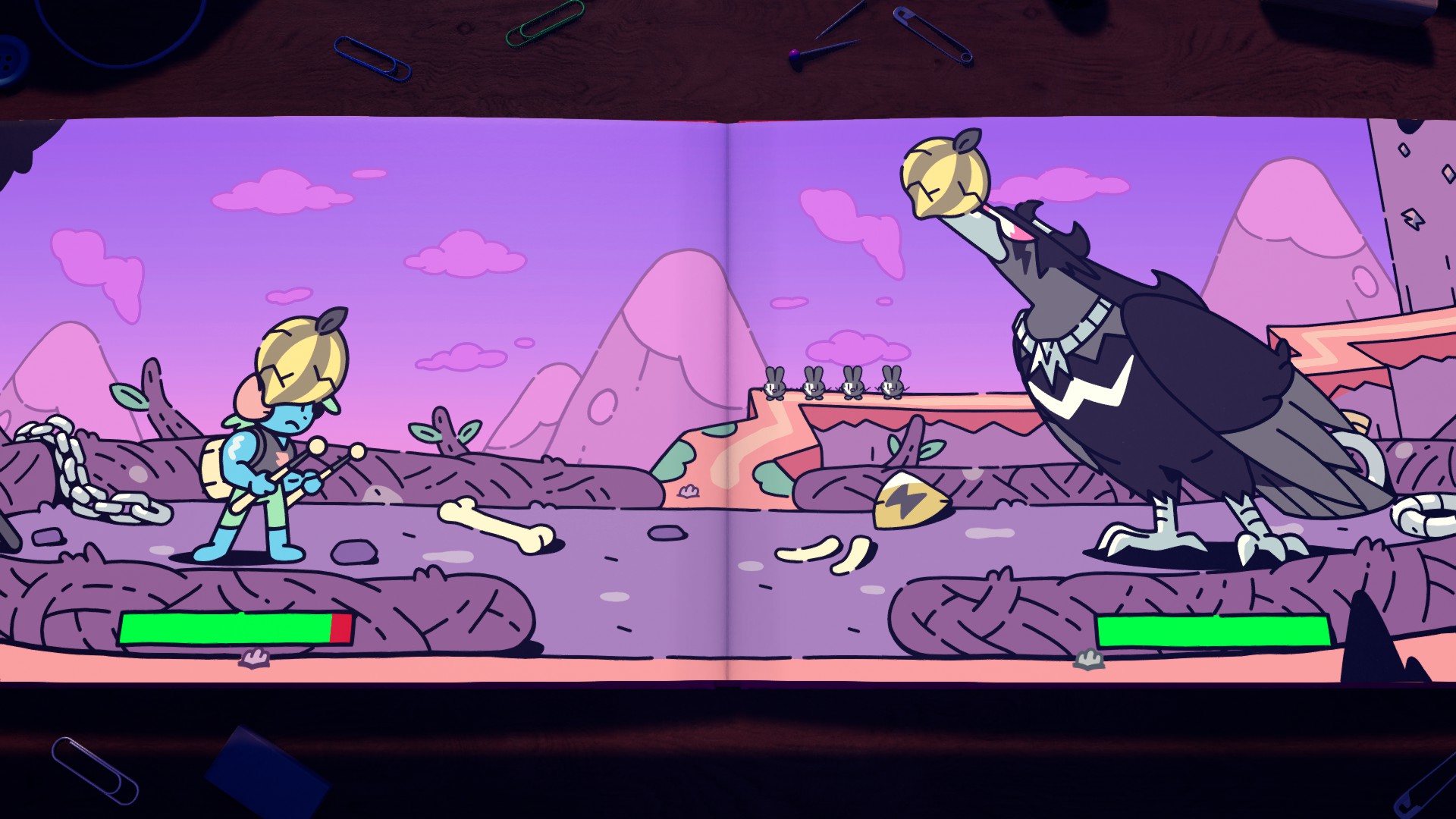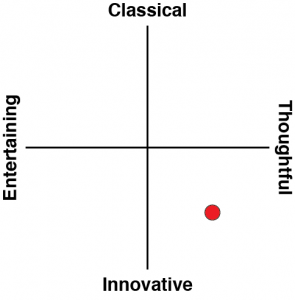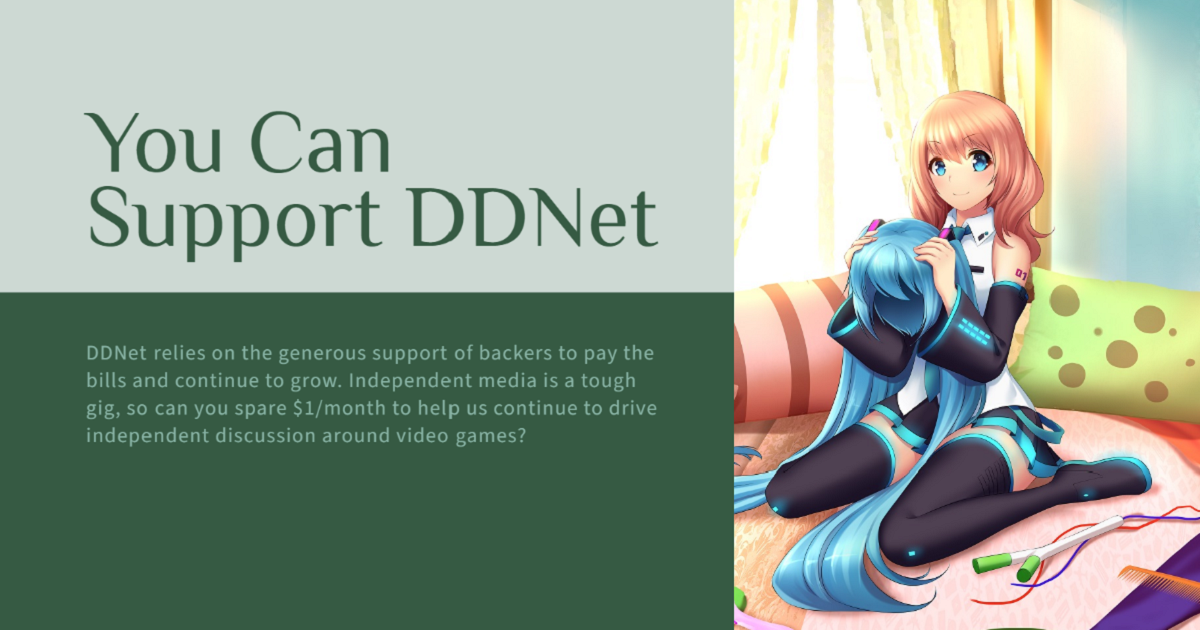Stop me if you’ve heard this one before. Once upon a time… oh, you have heard that one?
That’ll be because it’s an absolute standard fantasy trope, setting for a countless number of simple children’s stories told for centuries now. The Plucky Squire absolutely revels in tropes, not only relating to fantasy worlds but also video gaming in general.
That’s not an entirely new idea for gaming, mind.
The Plucky Squire starts out rather like a very light (and lighthearted) 2D Zelda game, taking the role of Jot, a plucky Squire in a storybook called (wait for it…) The Plucky Squire.
You’re the constant protagonist in a series of adventures you write yourself, always defeating the comically evil wizard Humgrump.
It’s a literal case of the story writing itself (and the characters within The Plucky Squire being aware that Jot writes up the adventures he has), but with few of the characters aware that they’re actually living inside a storybook world… until Humgrump works it out and turfs Jot out of the book entirely. Humgrump is causing chaos within the book world of The Plucky Squire. If he’s not stopped, the book will stop being so charming and inspiring, because nobody likes a badly written story.
Here The Plucky Squire flips from a simple (and quite charming) 2D Zelda-like game into a 3D world with a truly charming aesthetic set upon the desk of the book’s 10-year-old owner.
Even if you know the transition is coming, it’s done in a really visually engaging way, and it forms the primary hook of The Plucky Squire. If you’re faced with an impassable wall, or need a new power entirely to deal with a new threat, jump out of a portal from the book to the desk and get to searching around to find it before getting back to the story at hand. I couldn’t help but grin every time this happened, because while it’s a simple effect, it’s genuinely well realised in an artistic sense.
Like any good Zelda-style game, The Plucky Squire walks you through the game’s mechanics at a deliberate pace, introducing new elements and powers – whether it’s your sword’s powers, upgradeable through the inevitable merchant shop, or more meta-style powers that let you flip pages, freeze on-page elements or even tilt the entire book from side to side – as you progress.
As you go, the game jumps lightly between game styles, not just in the 2D to 3D sense, but also throwing in actual sideways viewed platforming puzzle sections, Defender-style shoot-em-up sections and even a small homage to Punch-Out! along the way.
Still, the primary gaming mechanic here are simple narrative puzzles, often built around the text on each page as you walk through it. Within much of the text, there are specific words that can be picked up by the squire and moved around, changing the world as you do, because if you change the words in sentences, they can suddenly cassowary elephant automobile custard.
See what I mean? Clearly, Humgrump’s been at my review, the swine.
The Plucky Squire doesn’t make its word puzzles anywhere near that inscrutable, however, typically just changing up an on-page element from being “Big” to “Small” or similar to allow you to progress. Towards the end of the game there are a just a few puzzles that are a little trickier to discern, but we’re not talking Water Temple difficulty here… far from it.
The Plucky Squire is deliberately light and rather easy, with an option simply to play through the game in “Story” mode, removing challenge in favour of letting you walk through the game’s rather fun script.
There’s also a range of assistive modes to remove specific challenge elements, making it more suitable for younger gamers who might find uncovering the game’s page-to-world portals or perhaps its combat a little too tough in sections. That would be for very young gamers, however, as The Plucky Squire is not a particularly difficult game at all, even without any assistance measures switched on.
That lower difficulty, along with the fact that there’s a very direct narrative pathway through the game does lead me to my one primary criticism of The Plucky Squire. It’s fun and charming and light, but it’s absolutely constrained to single solutions for relatively simple puzzles, and this does mean that it’s not a game that particularly invites you to play it over again once the story concludes.
There’s a small number of in-game collectibles – mostly concept art, which is quite nice to look at… once – but it’s not a game that I can see myself returning to on a regular basis.
It’s quite charming and lovely, and I did enjoy my time flipping between its in-game pages and some of the more subtle gaming jokes within it. You really can tell how much creative thought and polish was put into it, but it does mean that there are points where I felt like I was simply being guided through obvious sections, rather than enjoying the discovery of them.
It’s not that it needed to be longer, as it would outstay its welcome and short games are 100% fine by me, but perhaps some adjustable upwards difficulty, or breaking out the mini-games into their own unlocked sections – while they’re quite derivative, they’re well realised for the most part — or a way to encourage just a few more puzzle variant solves wouldn’t have gone astray here too.















